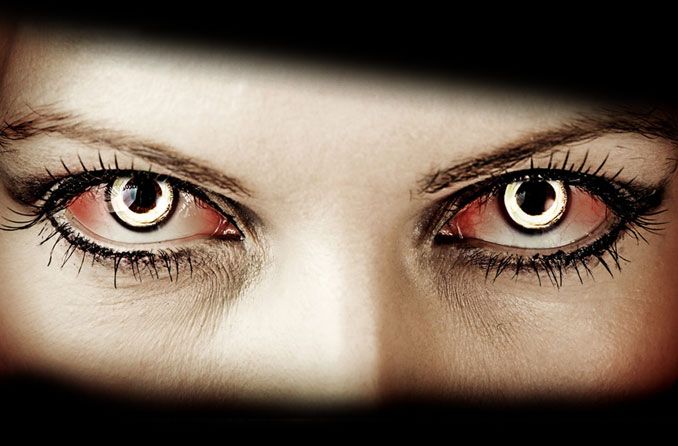With Halloween around the corner, the team at Good vision for life is warning trick or treaters about the risks of wearing novelty contact lenses and we encourage those dressing up to reconsider the need for decorative lenses.
Eye damage and blindness caused by cosmetic lenses is becoming a growing issue with the increasing popularity of the American holiday with Australians.
Ill-fitting, non-Therapeutic Goods Administration (TGA) approved lenses can cause corneal abrasions, ulcers, irritation and infection that can lead to permanent impairment or blindness.

Sophie Koh from Optometry Australia said Halloween partygoers need to be aware of the hazards that non-prescribed contacts can cause and is encouraging those looking to wear to think twice about applying anything decorative in or near their eyes.
“Each year we see a rise in people purchasing and wearing contacts that aren’t TGA approved or prescribed by their optometrist. Purchasing unapproved and counterfeit lenses from overseas based providers presents a risk for serious eye infection.
“We want revellers to enjoy the spooky night without it turning into something more sinister. Contact lenses are not one size fits all. If you do wish to wear contacts this Halloween, visit your optometrist to see whether lenses are suitable for your unique eyes, and if so, have the lenses fitted specifically to the size of your eyes.”
In 2017, The Journal of Forensic Sciences in the United States tested 300 pairs of novelty contact lenses and found 60 per cent of the counterfeit lenses and 27 per cent of the unnapproved lenses tested positive for microbial contamination which is commonly found in hospital waste water or spoiled food.
When prescribed and cared for properly, contact lenses can provide a form of eyewear or cosmetic enhancement with many benefits, however, misuse and unhygienic maintenance are leading causes of infection.
Sharing contacts between family and friends and not caring for lenses appropriately can spread germs, and may cause bacterial issues such as conjunctivitis and keratitis (eye ulcers).
Sophie continued, “It’s also important to remember that no matter how tired you are at the end of the night, don’t fall asleep in decoratative lenses as this can starve the eye of oxygen required for healthy functioning and provides an environment in which bacteria can flourish.
“The Centers for Disease Control and Prevention in the US found that nine in ten contact lens-wearers commit at least one unhygienic habit that places them at risk of eye inflammation or infection. It is vital consumers seek optical counsel before applying contacts to ensure their contacts fit their eyes and that they receive an appropriate aftercare plan to safeguard their eye health.”
Other common eye hazards found during Halloween, include:
- Make-up: costume makeup is often heavier than traditional every-day makeup, so it is advised that consumers take care when applying around the eye area. If makeup comes into contact with eyes, Optometry Australia recommends rinsing immediately with water and to visit an optometrist if irritation continues. Partygoers are also advised to use clean, sanitised applicators and makeup that is within its expiration period.
- Costume props: wizard wands, pirate swords and other external props used to enhance costumes can become hazards when used inappropriately. Optometry Australia recommends being conscious of space and to control props in people-heavy spaces.
- Foreign objects: micro-objects, such as glitter, fake eyelashes and eyelash glue can irritate eyes if they come into contact with the eye ball. Optometry Australia recommends avoid placing glitter around the eye area at all costs.
- Impeded vision: masks, SPFX and cosmetic contacts can obstruct the range of sight, and driving should not be conducted whilst wearing these enhancements to ensure peripheral vision is not obstructed.
Always seek professional guidance from an optometrist before using contact lenses and should eye-issues occur, visit an optometrist immediately to prevent long-term damage.





